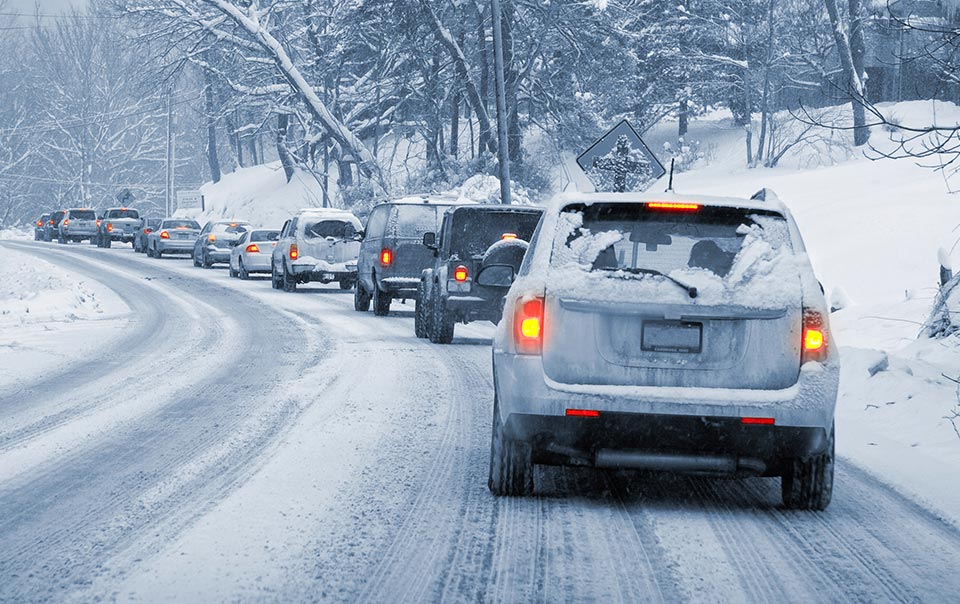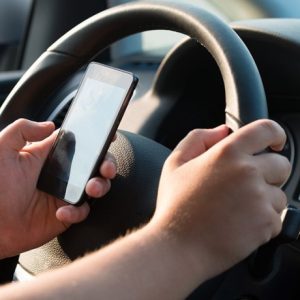When the winter weather strikes, when they get behind the wheel, drivers face out – of-the-ordinary challenges. Nearly one in four weather-related vehicle crashes involve snow, slush or icy roads.1 These conditions can make it harder for drivers to see, slow down and stop–all factors that may increase the likelihood of an accident.
Knowing the forecast and driving based on road conditions are three key ways to help you drive safer when you have to travel during winter weather. Following are some safety tips for winter driving to help you prepare for the elements on the road before you face them.
Preparing Your Vehicle
It’s time to make sure your car is stored with a winter driving survival kit, including an ice scraper, a snow shovel, and sand or salt, as temperatures start dropping. That way, if winter weather arrives while you’re away from home, you’ll be prepared. It’s also a good time to check your tires to see if it’s time for them to be replaced or if you need snow tires.
During the winter months, a few habits to adopt regularly can also help prepare you for a winter drive. Make it a practice to keep your gas tank at least half full so that if you get stuck or stranded, you can run your engine and stay warm. Keep your windshield wipers in good condition and your windshield fluid reservoir filled so you can clear snow and ice from your windshield.
Watching the Weather
If you plan to travel when inclement weather looms, check local news stations or Internet traffic and weather sites to monitor road and weather conditions. To receive text messages and optional alerts for your area, you can register for weather alerts. Do not check your phone while driving, and avoid all unnecessary distractions when you’re behind the wheel.
Driving for Winter Conditions
Take time off your car, including your windows, mirrors, lights, reflectors, hood, roof and trunk, before you leave the driveway or parking lot. Drive on with your headlights and keep them clean for visibility improvement. Use caution to limit your view of oncoming traffic by snow banks.
Remember that speed limits are meant for dry roads as you get on the road, not snow and ice covered roads. As road conditions and visibility worsen, you should reduce your speed and increase your distance. Avoid using cruise control in snowy or icy conditions –you want as much control of your car as possible. Be cautious on bridges and overpasses as they are commonly the first areas to become icy, and avoid passing snow plows and sand trucks. The drivers can have limited visibility, and the road in front of them could be worse than the road behind.
Breaking Down or Getting Stuck
If you venture out or are caught in a snowstorm unexpectedly and encounter problems, if your car is safely out of the way of harm, stay in your car and wait for assistance. To stay warm for 10 minutes every hour, you can run the car heater, but make sure your exhaust pipe is snow-free. There is a danger of carbon monoxide poisoning if snow blocks the pipe and enables the deadly gas to build up in your car. Slightly open your window to help avoid any buildup.
Remember, even for experienced drivers, driving in winter weather can be challenging. Slowing down, allowing more time to stop, wearing your seatbelt, paying full attention to the road and awareness of changing conditions can help you drive safer. If your travel route takes you into remote areas with limited cell phone coverage, consider informing a third party of your travel plans that include your route and when you plan to arrive. This way, if you are overdue, first responders will know where to start looking. If you’re unsure whether it is safe to drive, consider waiting until the roads improve.




